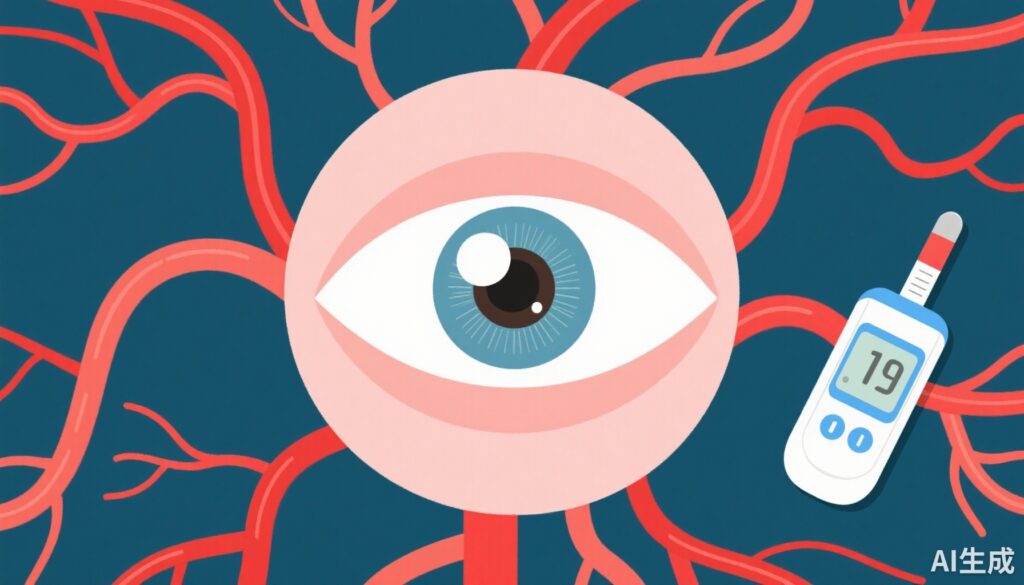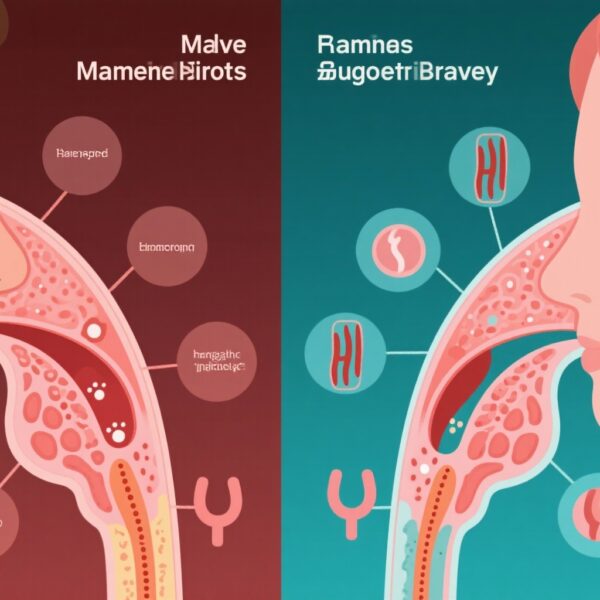Introduction
Diabetic retinopathy is a leading cause of visual impairment worldwide, arising as a microvascular complication of chronic hyperglycemia in individuals with diabetes mellitus. Despite advances in glycemic control and management strategies, preventing the onset and progression of retinopathy remains a significant clinical challenge. The recent secondary analysis of the Japan Diabetes Optimal Integrated Treatment Study for the 3 Major Risk Factors of Cardiovascular Diseases (J-DOIT3) provides vital insights into how multifactorial intervention influences retinopathy risk and the role of glycemic parameters and hypoglycemia.
Background and Disease Burden
Diabetic retinopathy affects approximately one-third of people with type 2 diabetes, contributing substantially to the global burden of visual disability. Persistent hyperglycemia, hypertension, and dyslipidemia are well-established risk factors. While intensive glycemic control has demonstrated benefits in reducing retinopathy incidence, it is also associated with an increased risk of hypoglycemia, which can itself impact microvascular outcomes. Therefore, understanding the optimal management strategies that balance these risks is crucial.
Study Design and Methods
The J-DOIT3 was a multicenter, open-label, randomized clinical trial conducted across 81 sites in Japan from June 2006 to March 2009. It enrolled 2,540 participants aged 45 to 69 years with type 2 diabetes, hypertension, and/or dyslipidemia. Participants were randomly assigned to either an intensive therapy group targeting stringent control of glucose, blood pressure, and lipids, or a conventional therapy group following standard care protocols.
The trial’s primary endpoints focused on cardiovascular outcomes and mortality, while this secondary analysis specifically examined ocular outcomes related to retinopathy. The follow-up period was a median of 8.5 years, with data collection on retinopathy onset, progression, and vision loss attributable to retinopathy.
Participants underwent regular assessments, including HbA1c, blood pressure, lipid profiles, and hypoglycemic episodes. Retinopathy was classified based on clinical examination and standardized grading protocols.
Major Findings
The analysis revealed that intensive therapy significantly reduced the risk of developing retinopathy (hazard ratio [HR], 0.83; 95% CI, 0.70-0.98; P=0.03), indicating a protective effect against retinopathy onset. However, it did not demonstrate a significant influence on retinopathy progression (HR, 1.02; 95% CI, 0.70-1.49; P=0.93).
A crucial finding relates to HbA1c levels. Higher HbA1c at 1 year post-randomization correlated with a greater risk of retinopathy onset (HR, 1.31; 95% CI, 1.13-1.51; P<0.001), even after adjusting for baseline confounders such as diabetes duration, body mass index, fasting plasma glucose, blood pressure, and nephropathy. Notably, no specific HbA1c threshold was identified, suggesting that even modest reductions below certain levels could influence retinopathy risk.
The study also examined the impact of nonsevere hypoglycemia episodes. Participants experiencing more than 0.5 episodes per year had a markedly increased risk of retinopathy onset (HR, 1.25; 95% CI, 1.02-1.53), with the risk rising further in those with over one episode annually (HR, 1.85; 95% CI, 1.39-2.47). These findings highlight a complex relationship where hypoglycemia, even of mild severity, may contribute to microvascular deterioration.
Clinical Implications
The results support the beneficial role of intensive, multifactorial management strategies in reducing the incidence of diabetic retinopathy among individuals with type 2 diabetes. However, the association between hypoglycemia and increased retinopathy risk underscores the importance of avoiding nonsevere hypoglycemic episodes during glucose management.
Furthermore, the data suggest that strict glycemic control—aiming for lower HbA1c levels—can be achieved without necessarily increasing hypoglycemia risk if carefully managed. This balance might be pivotal in individualized treatment plans to prevent microvascular complications.
Expert Commentary and Limitations
While the findings reinforce the benefits of a comprehensive treatment approach, the relationship between hypoglycemia and retinopathy warrants further exploration to elucidate underlying mechanisms. Some hypotheses suggest that hypoglycemia might induce transient retinal ischemia or oxidative stress, promoting microvascular damage.
Limitations include the study’s specific population (Japanese adults aged 45-69) and the open-label design, which could introduce bias. Generalizability to other ethnicities and age groups may require additional studies.
Conclusions and Future Directions
This secondary analysis emphasizes that in clinical practice, maintaining lower HbA1c levels and minimizing even mild hypoglycemia episodes are key components in preventing diabetic retinopathy. Future research should explore mechanistic pathways, optimal glycemic targets, and hypoglycemia mitigation strategies to enhance microvascular health.
Ultimately, personalized medicine—balancing tight glycemic control without inducing hypoglycemia—remains the cornerstone of preventing diabetic microvascular complications, including retinopathy.



